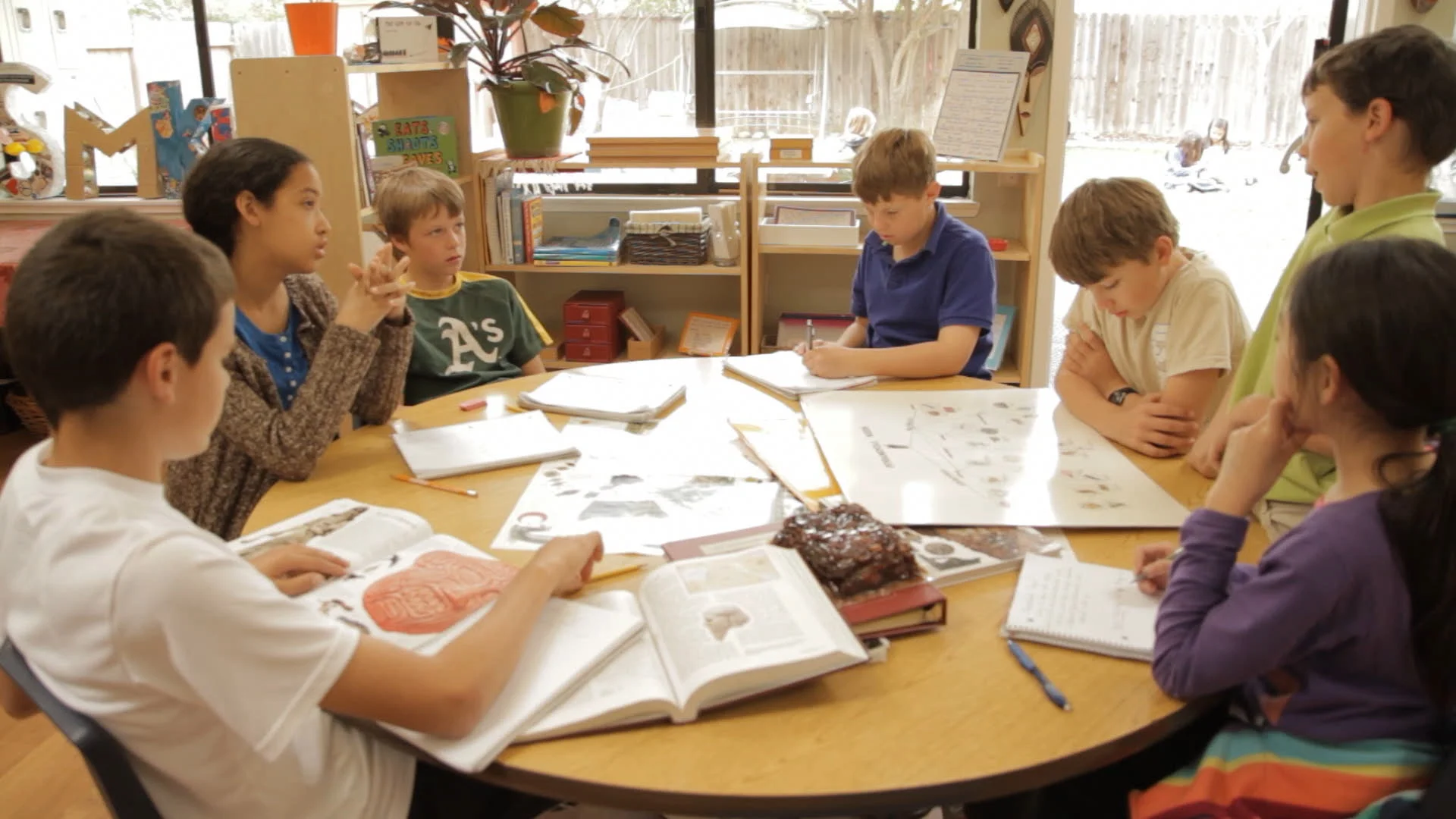Capturing Ordinary Days:
The Learning Continuum
An uninterrupted learning continuum for the child from the youngest age through adolescence is emblematic of Montessori educational settings. In programs adhering to the standards set by Association Montessori Internationale (AMI), the organization founded by Dr. Maria Montessori in 1929 to maintain the integrity of her life’s work, the learning continuum is shaped by a standardized practice that establishes a seamless consistency in approach across individual classrooms and up through the grade levels. This consistency is fostered by a rigorously monitored and integrated teacher training that focuses on the developmental path of the child. Language development, the progression of mathematics, and the various other disciplines are given a strong foundation in the early years that is directly utilized as a platform for the elementary experience and beyond.
LITERACY (24:18)
Capturing ordinary days in Montessori environments….The natural development of a literate human being, able to express himself and communicate successfully with others, is at the root of authentic Montessori practice.
NEW CLASSROOM (12:09)
Starting with threes: the fundamentals of starting a Montessori program.
Shorts: The Learning Continuum
1. The Alphabet of Life (7:13)
2. My Pink Tower (7:26)
3. Discovery (8:23)
Delving Deeper Into Our Craft:
The Learning Continuum
“Help me to help myself”: Independence and the Montessori Philosophy
by Jennifer Shields
Maria Montessori had an innovative perspective regarding education. She did not look at a set of skills or a body of knowledge. Instead she focused on the development of the whole person over the course of gaining maturity:
“Montessori saw education as a means whereby children might develop their personalities so as to eventually achieve a mature and independent adulthood.” (Mario Montessori, Education for Human Development)
Isn’t that what each of us wants? For our child to become an adult who can make good decisions, who feels confident and knows herself? Who can both accept her reality and work to make the world a better place? The fundamental foundation for this independence is laid at the beginning of a child’s life... READ MORE
GOING OUT (12:40)
Preparing the elementary child for the future includes going beyond the classroom.
The Path to Total Reading
An Aspect of Montessori Language Chart issued by the AMI Pedagogical Committee
The Pedagogical Committee of AMI is often asked for advice with regard to the organization of language activities in Montessori schools. The above chart may be of help. It is based on the natural development of language and follows, for what concerns the age of the child, the chart to be found in Dr. Montessori’s book, The Absorbent Mind.
The left-hand portion of the chart contains the activities before the child is able to read and goes up to reaching the ability to write. This ability occupies, as it were, the center, because it gives the understanding that thoughts can be transmitted with alphabetical symbols; hence the possibility also of receiving them. The portion on the right contains the activities which lead the child to get all he should out of reading, including the gradual education of his own mind to formulate and write his thoughts as well as possible at this age, that is between 7 and 8 years.
CONNECTION (7:57)
The Montessori primary teacher is asked to become the “dynamic link” to the prepared environment for the child.
In Her Words
These selected passages come from Dr. Montessori’s recently published The 1946 London Lectures. Published in 2012 by the Montessori-Pierson Publishing House in conjunction with AMI, edited by Dr. Annette Haines, these lectures “became the foundation of AMI’s 3-6 courses.”
In her chapter on “The Planes of Development,” Dr. Montessori writes:
“The period from birth to eighteen years of age is usually divided, by modern psychologists, into three periods—three very definite periods—that can be distinguished clearly from one another. These periods are equal in length. The first goes from birth to six, the second spans the years from six to twelve, and the third is from twelve to eighteen years. We know that man goes on developing until he is twenty-four and then his development is complete. He is mature. Each of these six-year periods can also be divided into equal periods of three years each. So life is broken up into short periods of three years each…” READ MORE
Montessori Community Resources
The Montessori Community has come together to support greater access to Montessori Teacher Training and development of Teacher Trainers through the following Funds:
‣ AMI Montessori Teacher Training (US)
‣ Black Montessori Education Fund
‣ Global support for Montessori
‣ MES Fund
‣ MM75
‣ Silvana Montanaro Fund









